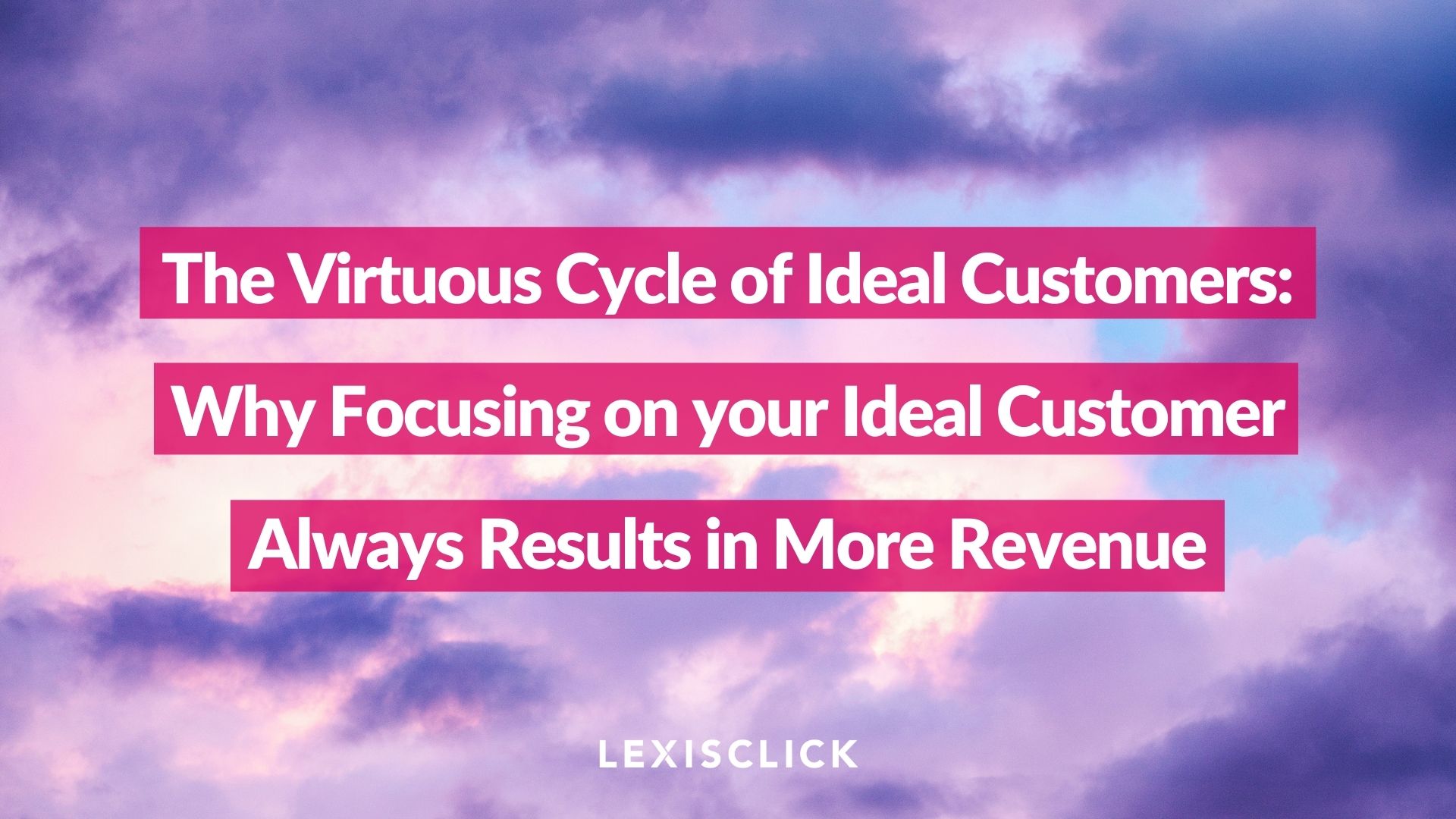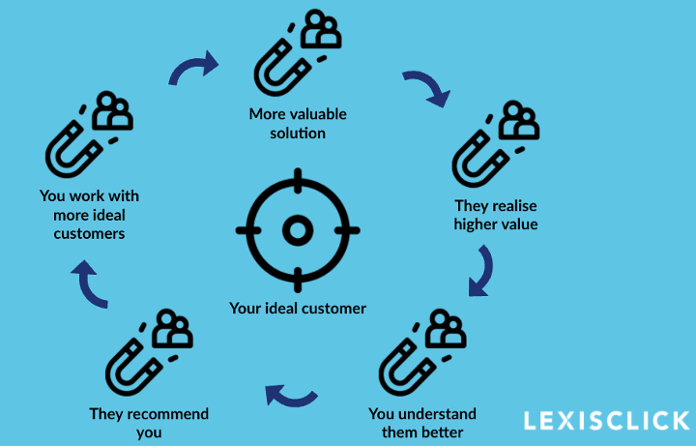
Are you familiar with the Pareto Principle? It states that around 80% of consequences come from 20% of causes. And this is something we can apply to revenue. Let’s assume that 20% of your clients are responsible for 80% of your profit, and vice versa. It’s clear that maximising your return on investment begins with defining and targeting that 20%; those ‘ideal’ customer profiles. Below, we take a look at how focusing on these customers can take your business and revenue to the next level.
Quality over quantity
As a growing consultancy, it’s natural that you’ll be on a mission to serve everyone. Surely that’s the best way to drive revenue, right? Consider restaurants, for example. A restaurant with only one item on the menu will attract only a very small subset of hungry customers. On the other hand, a restaurant with a huge and varied menu will appeal to more people, generating more revenue.
The trouble is when you take that catch all approach, you can fall into the trap of being a jack of all trades. Providing a buffet can work for restaurants, but things are different in the world of consultancy. The broader your niche, the less valuable you become to the marketplace. And that’s because, consultancies drive revenue from the quality of their service. We talk a little more about quality vs quantity in our previous post on generating leads. But essentially, what consultancies need to consider when boosting their return on investment is the virtuous cycle of the ideal customer.
What this means is that the power, influence, and impact of a high-quality customer doesn’t end once a project comes to a close. It continues to make a difference to your bottom line well into the future. For consultancies, the customer journey isn’t a straight line from start to finish. It’s an infinite loop where those at the bottom of the funnel have influence over those at the top.

Your ideal customer and your revenue: exploring the link
Imagine you’ve got two customers standing in front of you. One is the precise embodiment of your ideal customer profile; they’re standing right in the centre of the imaginary customer dartboard. The other is a customer you can certainly assist, but they’re further out from the bullseye. Perhaps there are a few discrepancies between their needs and your expertise. Now think about who would cite your solution as being more valuable. It's clear, isn’t it? You’re more valuable to your ideal customer.

So now, you’re in an elevated position. When your solution is viewed as being more valuable, your customer realises this higher value, and engages and interacts more with your business. With stronger relationships comes an ability for you to better understand needs. And of course, when you understand their needs better, you’re able to offer a higher value service that truly delights your ideal customers.
Happy customers are talkative customers. They begin recommending you to others. But not just any others. Others within their network; similar businesses that also align with your ideal customer profile. Ultimately, this gets you working with more and more ‘ideal’ customers, who also view your solution as valuable, interact with your brand, and recommend you. The cycle starts all over again!
Today’s consultancies should be focusing on providing an exceptional service and nurturing their ideal customer profiles, from initial engagement right through the entire relationship. When successful, ideal customers can become your brand’s most valuable and most loyal advocates. They’re what’s going to help you access further opportunities for revenue growth along the way.
Let’s not forget about the other 80%
What we’ve looked at above shows how the top 20% of your customers – those that generate 80% of your revenue – can attract and impact other high-quality leads. And this is the key: focusing on quality, not quantity. However, there’s something else interesting about the virtuous cycle of ideal customers. It allows you to serve the other 80% – those ‘lower’ quality leads that generate 20% of your revenue – without you having to adapt or broaden your strategy to try and appeal to everyone.

How? Through the Halo Effect.
There’s a phenomenon known as the ‘Halo Effect’. It states that, if one person believes you to be good at one thing, the effect can ripple out to a point where multiple people believe you to be good at multiple things. This can easily be applied to your ideal customer. When your services and your customer’s needs are well aligned, that customer is more likely to have a good experience. And it takes just one good experience to attract others, draw more people in, and boost your revenue.
So thanks to the Halo Effect, focusing on your ideal customer profile doesn’t mean you have to distance yourself from the remainder of your audience who don’t exactly fit your ideal customer profile. In fact, it could bring you closer to them.
Attracting your ideal customers
Of course, you can’t enjoy the benefits of the virtuous cycle of ideal customers if you don’t have any ideal customers to begin with! So how can you build and attract your ideal customer profile?
Here are some strategic starting points:
- Ask yourself what problems your customers are having and identify their pain points
- Find a clear and strong link between these pain points, and the services you offer
- Analyse your value proposition, and discover how customers link problems & services
- Develop an elevator pitch that directly addresses the customer need and your solution
- Anticipate obstacles and roadblocks, and prepare to overcome them
If you’re struggling to attract your ideal customers, our lead generation planning templates can help.
Once your lead generation efforts are pulling in the right type of customer profile, you can start to produce engaging content that guides your customers through the funnel, allowing you to take a proactive, data-driven approach to helping your customers utilise your service. This approach can help you achieve numerous business goals. As well as increasing your revenue, you may also find that you’re able to spark deeper customer loyalty, reduce churn, and maximise the customer lifetime value.

Ready to hone your niche?
If you’re ready to shift away from the concept of trying to please everyone, and start honing your niche to focus on that hugely valuable 20%, we’re here to help. Join us on a free lead gen strategy call, or discover how our paid solutions can help you map out your ideal customer profile.

